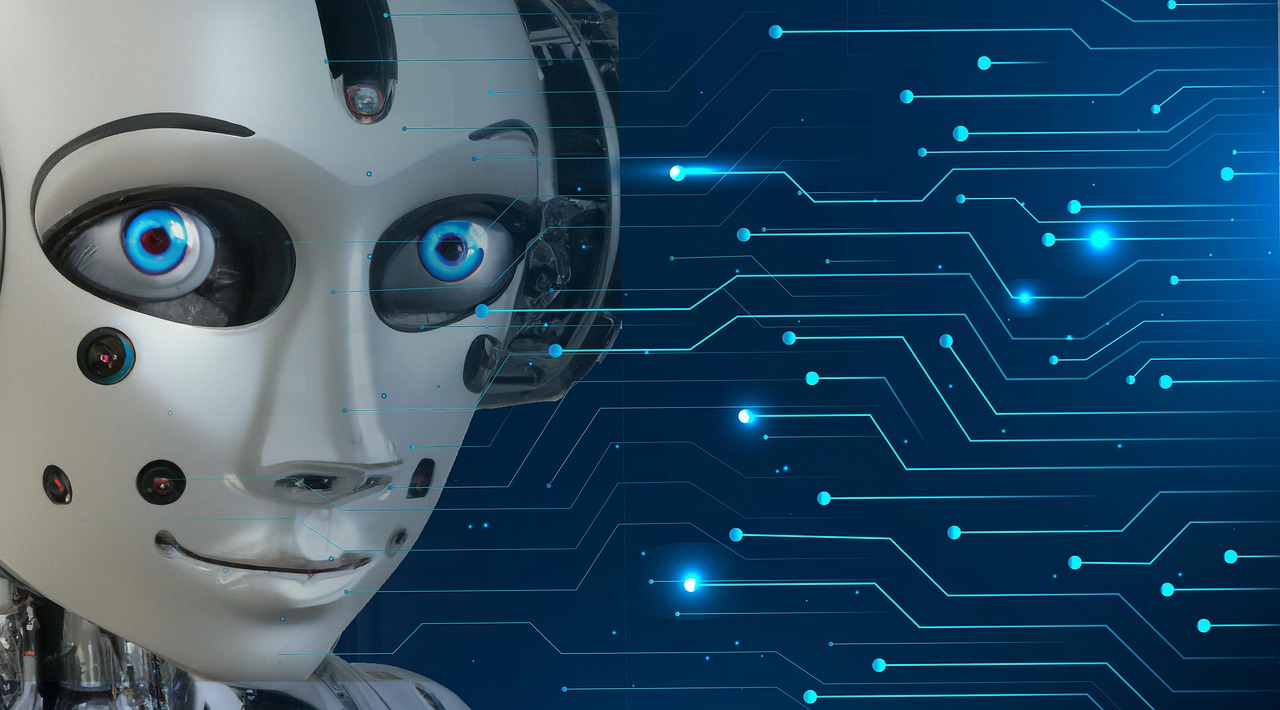Imagine a world where tasks, from driving a car to managing a warehouse, are performed with minimal human intervention. This is the promise of autonomous systems, a rapidly evolving field that’s reshaping industries and redefining the relationship between humans and machines. This article delves into the fascinating world of autonomous systems, exploring their capabilities, benefits, and potential impact on our future.
What are Autonomous Systems?
Defining Autonomy
Autonomous systems are engineered systems that can perform tasks without explicit human control. These systems use sensors, algorithms, and actuators to perceive their environment, make decisions, and take actions to achieve a specific goal. The level of autonomy can vary significantly, ranging from semi-autonomous systems that require some human oversight to fully autonomous systems that operate independently.
Key Components of an Autonomous System
To understand how these systems function, it’s crucial to understand their key components:
- Sensors: These devices gather data from the environment. Examples include cameras, LiDAR, radar, GPS, and inertial measurement units (IMUs). They provide the system with information about its surroundings.
- Algorithms: These are sets of rules and instructions that the system uses to process sensor data, make decisions, and plan actions. They are often based on artificial intelligence (AI) and machine learning (ML) techniques.
- Actuators: These components execute the decisions made by the system. Examples include motors, robotic arms, and steering mechanisms. They allow the system to interact with and manipulate the environment.
- Control System: This overarching system manages the interplay between sensors, algorithms and actuators to achieve the desired goal.
- Power Source: Autonomous systems require a power source to operate, which can be batteries, fuel cells, or direct electrical connection.
Levels of Autonomy
The Society of Automotive Engineers (SAE) defines six levels of driving automation, ranging from 0 (no automation) to 5 (full automation). This scale can be generally applied to most autonomous systems. Understanding these levels is key to understanding the current state and future direction of the technology:
- Level 0: No Automation: The human driver performs all driving tasks.
- Level 1: Driver Assistance: The system assists the driver with certain tasks, such as steering or acceleration.
- Level 2: Partial Automation: The system can control both steering and acceleration/deceleration under certain conditions, but the driver must remain attentive and ready to take control. Tesla’s Autopilot (with supervision) often operates at this level.
- Level 3: Conditional Automation: The system can perform all driving tasks under specific conditions, but the driver must be ready to intervene when prompted. This is where significant ethical and technological challenges arise.
- Level 4: High Automation: The system can perform all driving tasks under specific conditions and can handle most situations without human intervention. Geo-fencing often restricts use to specific, mapped areas.
- Level 5: Full Automation: The system can perform all driving tasks under all conditions. No human intervention is required.
Benefits and Applications of Autonomous Systems
Increased Efficiency and Productivity
Autonomous systems can operate continuously without fatigue, leading to increased efficiency and productivity in various industries.
- Manufacturing: Autonomous robots can perform repetitive tasks with greater precision and speed than human workers, increasing production output and reducing errors.
- Logistics: Self-driving trucks and drones can optimize delivery routes and reduce transportation costs, improving supply chain efficiency. Amazon is a significant investor in autonomous delivery systems.
- Agriculture: Autonomous tractors and harvesters can automate planting, harvesting, and other agricultural tasks, improving crop yields and reducing labor costs.
Enhanced Safety
Autonomous systems can reduce the risk of accidents caused by human error.
- Transportation: Self-driving cars can avoid accidents caused by distracted driving, drunk driving, and other human factors. According to the National Highway Traffic Safety Administration (NHTSA), human error is a factor in approximately 94% of crashes.
- Construction: Autonomous robots can perform dangerous tasks in hazardous environments, reducing the risk of injury to construction workers.
- Mining: Autonomous vehicles can operate in mines, reducing the risk of accidents and improving worker safety.
Reduced Costs
While the initial investment in autonomous systems can be significant, they can lead to long-term cost savings.
- Labor Costs: Automation can reduce the need for human labor, resulting in significant cost savings.
- Energy Costs: Autonomous systems can optimize energy consumption, reducing energy costs.
- Maintenance Costs: While autonomous systems require maintenance, they can be designed for greater reliability and longevity, reducing maintenance costs over time.
Specific Applications
- Self-Driving Vehicles: This is perhaps the most well-known application, aiming to revolutionize transportation.
- Drones: Used for delivery, surveillance, inspection, and photography.
- Robotics: Used in manufacturing, healthcare, and exploration.
- Smart Homes: Automating tasks like lighting, temperature control, and security.
- Healthcare: Assisting with surgery, medication delivery, and patient monitoring.
Challenges and Limitations
Technological Challenges
Developing truly autonomous systems is a complex technological challenge.
- Sensor Limitations: Sensors can be affected by weather conditions, lighting, and other environmental factors, limiting their accuracy and reliability.
- Algorithm Complexity: Developing algorithms that can accurately interpret sensor data and make appropriate decisions is a difficult task.
- Cybersecurity Risks: Autonomous systems are vulnerable to cyberattacks, which could compromise their functionality and safety. Securing these systems is paramount.
- Edge Cases: Autonomous systems struggle to handle unexpected or unusual situations.
Ethical and Social Implications
The widespread adoption of autonomous systems raises important ethical and social questions.
- Job Displacement: Automation could lead to significant job losses in certain industries.
- Bias and Fairness: Algorithms can be biased based on the data they are trained on, leading to unfair or discriminatory outcomes.
- Liability and Accountability: Determining who is responsible when an autonomous system causes an accident is a complex legal and ethical issue.
Regulatory and Legal Frameworks
The legal and regulatory frameworks for autonomous systems are still under development.
- Safety Standards: Establishing clear safety standards is essential to ensure the safe deployment of autonomous systems.
- Data Privacy: Protecting the privacy of data collected by autonomous systems is a critical concern.
- Liability Laws: Developing laws that address liability in the event of an accident involving an autonomous system is necessary.
The Future of Autonomous Systems
Advancements in AI and Machine Learning
Advances in AI and ML are driving the development of more sophisticated and capable autonomous systems.
- Deep Learning: Deep learning algorithms are enabling autonomous systems to learn from vast amounts of data and make more accurate decisions.
- Reinforcement Learning: Reinforcement learning algorithms are allowing autonomous systems to learn through trial and error, improving their performance over time.
- Explainable AI (XAI): XAI techniques are being developed to make AI algorithms more transparent and understandable, improving trust and accountability.
Integration with the Internet of Things (IoT)
The integration of autonomous systems with the IoT is creating new opportunities for automation and efficiency.
- Smart Cities: Autonomous systems can be used to manage traffic flow, optimize energy consumption, and improve public safety in smart cities.
- Connected Factories: Autonomous robots can be integrated with IoT sensors and systems to optimize production processes in connected factories.
- Smart Homes: Autonomous systems can be integrated with IoT devices to automate tasks and improve comfort and convenience in smart homes.
The Role of 5G and Edge Computing
5G and edge computing are enabling faster and more reliable communication and processing for autonomous systems.
- Low Latency: 5G provides low latency communication, which is essential for real-time decision-making by autonomous systems.
- High Bandwidth: 5G provides high bandwidth, which allows autonomous systems to transmit and receive large amounts of data.
- Edge Computing: Edge computing allows autonomous systems to process data locally, reducing latency and improving performance.
Conclusion
Autonomous systems represent a transformative technology with the potential to revolutionize industries and improve our lives. While challenges remain, the ongoing advancements in AI, machine learning, and related technologies are paving the way for a future where autonomous systems play an increasingly important role. Understanding the capabilities, limitations, and ethical implications of these systems is crucial for navigating this evolving landscape and harnessing their potential for the benefit of society. Keep an eye on developments in AI, sensor technology, and regulatory frameworks as they will largely determine the speed and scope of autonomous system adoption.




